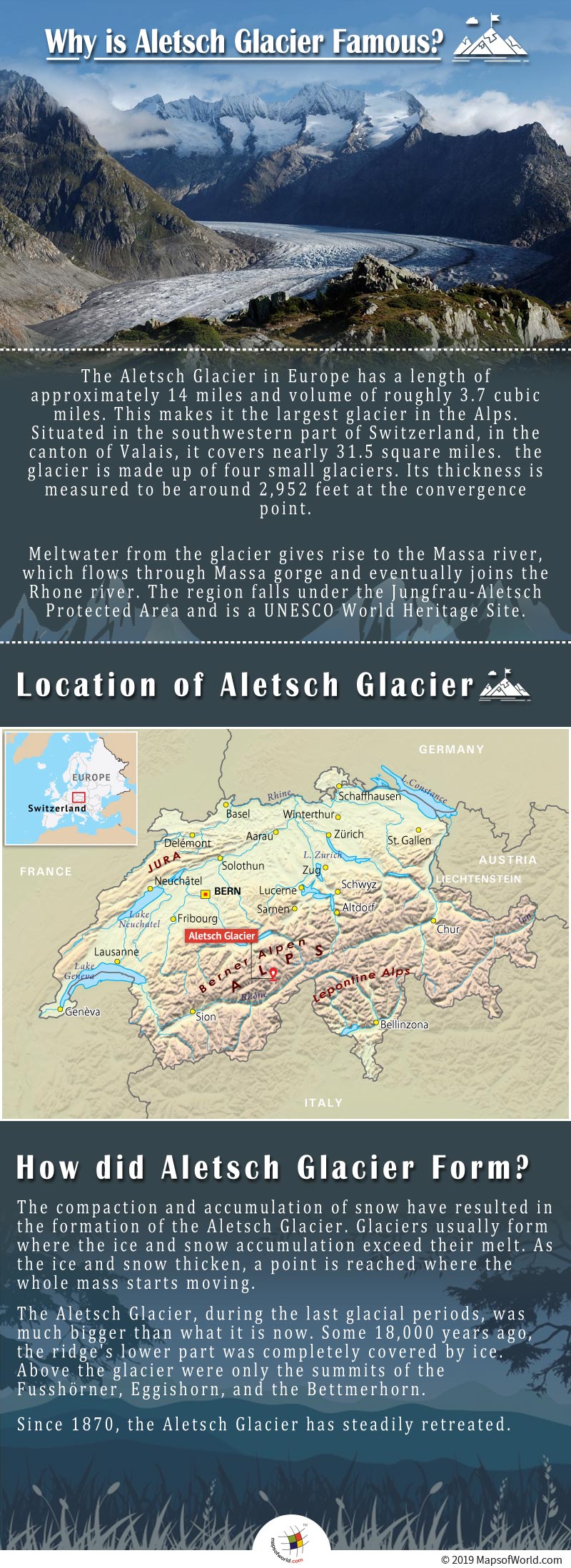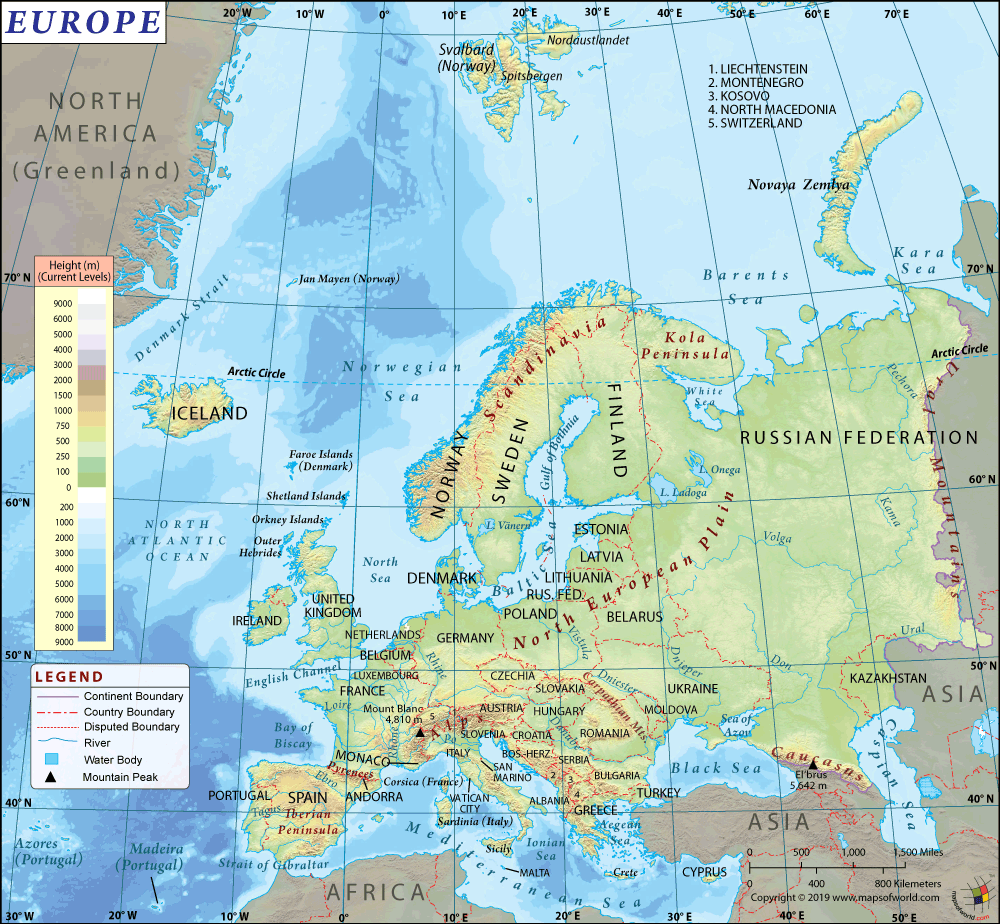Why is Aletsch Glacier Famous?

The Aletsch Glacier in Europe has a length of approximately 14 miles and volume of roughly 3.7 cubic miles. This makes it the largest glacier in the Alps. It is also known as the Great Aletsch Glacier. Situated in the southwestern part of Switzerland, in the canton of Valais, it covers nearly 31.5 square miles.
Converging at Concordia Place, the glacier is made up of four small glaciers. Its thickness is measured to be around 2,952 feet at the convergence point. Like most glaciers in the world, Aletsch is also a retreating glacier. Since 1980, it has lost over 0.81 miles of length and more than 980 feet of the thickness.
Melt-water from the glacier gives rise to the Massa river, which flows through Massa gorge and eventually joins the Rhone river. The region falls under the Jungfrau-Aletsch Protected Area and is a UNESCO World Heritage Site.
Location of Aletsch Glacier
The glacier lies between the cantons of Valais and Bern on the Bernese Alps, located on the Gemmi Pass’ east. This area constitutes western Eurasia’s largest glaciated area. The Aar and Fiescher Glaciers which lie on the east possess similar extensions. The glaciers converge before reaching the maximum flow.
The Grosser Aletschfirn flows from the western mouth. It runs along the Dreieckhorn and Aletschhorn.
The Jungfraufirn flows from the northwestern mouth. Of all the 4 constituent glaciers, it is the shortest one. It also represents the Aletsch Glacier’s straight continuation.
The Ewigschneefäld flows from the northern mouth. In the east, it flanks from Grünhorn and Fiescherhorn. From the west, it flanks from the Trugberg.
The Konkordiaplatz: the Grüneggfirn is the smallest firn that arrives from the east.
How did Aletsch Glacier Form?
The compaction and accumulation of snow have resulted in the formation of the Aletsch Glacier. Glaciers usually form where the ice and snow accumulation exceeds their melt. As the ice and snow thicken, a point is reached where the whole mass starts moving. This happens as a result of the pressure of the ice and snow, and gravity.
The Aletsch Glacier, during the last glacial periods, was much bigger than what it is now. Some 18,000 years ago, the ridge’s lower part was completely covered by ice. Above the glacier were only the summits of the Fusshörner, Eggishorn, and the Bettmerhorn. During the last glacial period, some 11,000 years ago, the glacier retreated significantly. Thereafter, the glacier advanced once again. Its ice touched the Riederfurka, while the glacier reached the Rhône valley.
Since 1870, the Aletsch Glacier has steadily retreated. Global warming is expected to further reduce its ice mass by 2100. This prompted UNESCO to designate a 97 square mile area around the glacier as a protected site. Jungfrau-Aletsch Protected Area was declared a World Heritage Site in 2001.
An Important Tourist Attraction
The Aletsch Region, an area which falls between Bettmeralp, Riederalp, and Belalp, is located in Valais and gives access to the glacier’s lower part. Eggishorn and Bettmerhorn are famous tourist points and are accessible by the cable car. Thanks to the construction of a suspension bridge in 2008, it is easy to cross the Massa River now. This has facilitated hiking trips between the right and left portions of the glacier.
To reach the normal route to the Jungfrau and upper Aletsch Glacier, the Jungfraujoch railway station is the easiest way. The Hollandia Hut or Konkordia Hut have mesmerizing views.
Between the glacier and Riederalp, there is the iconic Villa Cassel at 2,065 meters on the Riederfurka. Earlier, it served as a summer residence for many influential and famous guests in the fields of finance and politics from all around the world. Currently, it is a center for environmental organization Pro Natura which carries out conservation efforts in the area.
Related Links:


